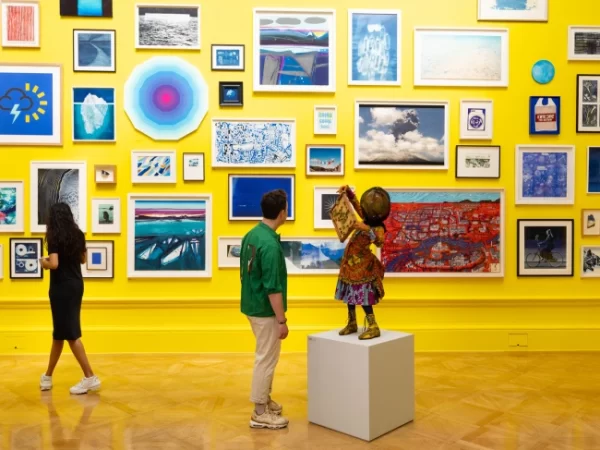
Art exhibitions have often been the catalysts for new movements and changes in the art world. Takashi Murakami‘s “Superflat” exhibition in Tokyo in 2000 was one such event that revolutionized the contemporary art scene. It showcased the works of several Japanese artists, and Murakami’s influence on the “Superflat” movement cannot be overstated. The movement is known for its blending of high and low culture, anime-inspired aesthetics, and its use of bright colors and flattened forms. Similarly, Kaws in Moco Museum in Amsterdam, in 2019, challenged the traditional art world by showcasing his popular cartoon-inspired characters. The exhibition generated a lot of buzz, attracting crowds of people to experience his work firsthand.
Shocking the art world: the 1913 armory show
The Armory Show of 1913 was one of the most groundbreaking exhibitions in the history of modern art. It took place in New York City and featured works by both American and European artists, including Pablo Picasso, Marcel Duchamp, and Henri Matisse. The exhibition was shocking to many who attended, as it showcased a new type of art that was radically different from traditional styles. Cubism, which was pioneered by Picasso and Georges Braque, was one of the most controversial styles featured at the show. The exhibition also featured several works by Duchamp, including his infamous sculpture “Nude Descending a Staircase,” which was ridiculed by critics but became one of the most famous works of the show. The Armory Show was a turning point for modern art in America, as it introduced new ideas and styles that challenged the status quo and paved the way for future generations of artists.
The feminist art movement: Judy Chicago’s “the dinner party”
Judy Chicago’s “The Dinner Party” is one of the most significant feminist artworks of the 20th century. The piece consists of a triangular table with place settings for 39 women in history, including Sappho, Georgia O’Keeffe, and Sojourner Truth. Each place setting is adorned with intricate designs and symbols, with a runner underneath featuring names of 999 additional women. The artwork aimed to highlight the significant contributions of women throughout history, which had often been overlooked or disregarded. Chicago spent five years creating “The Dinner Party,” which was first exhibited in San Francisco in 1979 before touring the world for six years. The piece sparked controversy and conversation about women’s role in history and their representation in art. It remains an iconic work of feminist art and a symbol of the struggle for gender equality.


